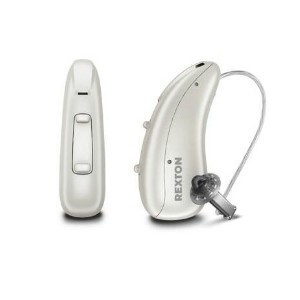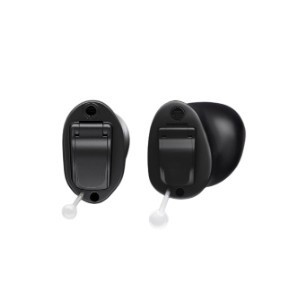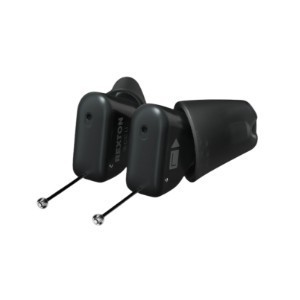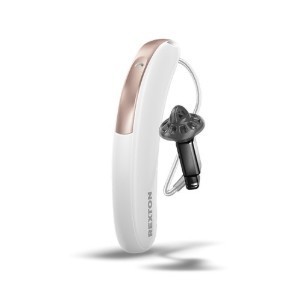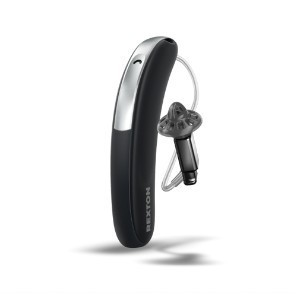
Rexton Hearing Aids UK
Rexton hearing aids reviews, models, ratings and prices
| Hearing Aid UK 2025-11-04 Update |
An introduction to Rexton hearing aids
Hearing is a vital aspect of our daily lives, connecting us to the world around us. Since 1955, Rexton has been at the forefront of delivering advanced hearing technology, earning a well-deserved reputation as a reliable and innovative provider of hearing aids.
Rexton's journey began in 1955, reaming a brand deeply committed to enhancing the lives of individuals with hearing impairments. Over the decades, the company's dedication to delivering proven hearing technology has only strengthened, cementing its status as a trusted name in the industry.
Rexton hearing aids understand real-life reliability
At the core of Rexton's philosophy lies a profound understanding of what reliability truly means in the context of everyday life. Recognising that hearing aids are not just devices but integral companions in the wearer's journey, Rexton focuses on creating practical, user-friendly products that users can rely on consistently.
Rexton takes pride in its user-centric approach, ensuring that its hearing aids are not only technologically advanced but also practical and easy to use. Recognising the diverse lifestyles of wearers, Rexton designs its products to seamlessly integrate into daily activities, providing a hassle-free experience.
The intuitive design and user-friendly features make Rexton hearing aids an accessible and indispensable tool for those with hearing impairments.
Rexton hearing aids offer versatility tailored to your lifestyle
One of the standout features of Rexton hearing aids is their adaptability to various environments. Whether you are in a bustling office, enjoying leisure time in nature, or attending a social gathering, Rexton hearing aids are built to be worn effortlessly.
The versatility of these hearing aids ensures that users can transition seamlessly between different settings without compromising on hearing clarity and comfort.
They are designed to perform admirably in all conditions, and they are equipped with proven hearing technology that undergoes rigorous testing to meet the highest standards.
Cutting-edge technology with Rexton hearing aids
Rexton's commitment to technological excellence is reflected in its use of innovative features and innovations. The hearing technology embedded in Rexton hearing aids is not only advanced but is also subject to meticulous testing, ensuring that it meets or exceeds the highest industry standards.
Rexton hearing aids are more than just devices; they are designed to seamlessly integrate into the fabric of your lifestyle. The discreet and ergonomic designs prioritise user comfort while providing maximum hearing support.
Rexton understands that hearing aids should enhance, not hinder, daily life, and this philosophy is evident in the thoughtfully crafted solutions they offer to hearing aid wearers.
Trustworthy performance with Rexton hearing aids
Rexton hearing aids are now renowned for their exceptional sound quality, durability, and overall effectiveness. The brand's legacy of dependability is a testament to its ongoing commitment to customer satisfaction and continuous improvement.
Recognising the unique needs of those with hearing impairments, Rexton goes beyond a one-size-fits-all approach.
The brand offers a range of hearing aid models, each equipped with features tailored to specific requirements. From advanced noise reduction capabilities to personalised settings, Rexton ensures that users receive a customised solution that caters to their distinct hearing loss needs.
Comprehensive support and service with Rexton hearing aids
The brand also provides comprehensive support and service, ensuring that users feel confident and empowered throughout their hearing journey. This commitment includes regular maintenance, software updates, and a responsive customer support team ready to address any concerns or questions.
Rexton embraces the values of inclusivity and accessibility, aiming to make advanced hearing technology available to a broader audience.
The brand's dedication to providing practical and easy-to-use solutions reflects its commitment to breaking down barriers and empowering individuals with hearing impairments to fully engage in all aspects of life.
Rexton hearing aid's Bluetooth technology
Direct streaming to hearing aids via Bluetooth for Apple devices: Rexton hearing aids connect directly to your iPhone, iPad or iPod so that you can directly stream your phone calls and music to your hearing aids. For hands-free calls, ensure you have the latest version of iOS/iPadOS that is available.
For the Rexton hearing aids app, you'll need iOS version 14.0 and higher.
Direct streaming to hearing aids via Bluetooth for Android devices: With Rexton hearing aids, you can now stream to Android devices directly via the ASHA (Audio Streaming for Hearing Aids) standard with the OS version Android 11 or higher. To use the Rexton hearing aids app, you'll need Android 9.0 or higher.
Rexton hearing aid's accessories
Smart Transmitter 2.4: Connects your hearing aids to both TV and audio systems for easy audio streaming with no additional remote control needed.
Smart Mic: This mini remote microphone offers hands-free calls and streaming audio to your hearing aids. You can listen to music and use it as a microphone in conference-like settings.
Smart Key: This discreet device serves as a compact remote that easily fits into your pocket.
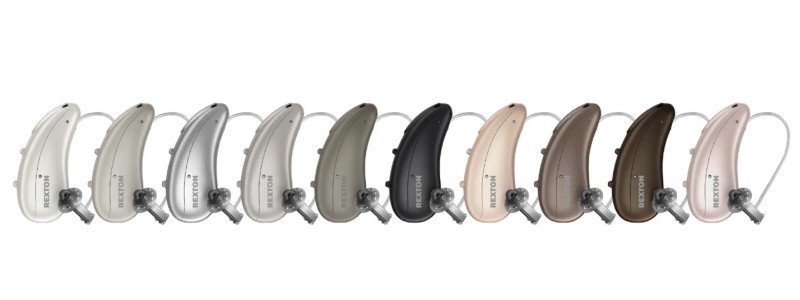
Rexton Hearing Aids UK
Rexton hearing aid ranges
Rexton Reach hearing aids
Rexton Reach hearing aids enable you to hear multiple voices all at the same time - even in background noise with Multi-Voice Focus technology. Multi-Voice Focus scans your surrounding environment 1,000 times a second using 4 focus beams and adapts to changes in speaker positions and volumes automatically.
For example, when multiple people are talking within a conversation, naturally, voices drop in and out and travel around. Past hearing aids have struggled with this and have not been able to catch every word until now.
►Rexton Reach 80 R-Li / R-Li T hearing aids
►Rexton Reach custom 80 hearing aids
►Rexton Reach SlimRIC 80 hearing aids
►Rexton Reach inoX 80 hearing aids
Rexton BiCore hearing aids
Using their Speech Preservation Technology, Rexton BiCore hearing aids intelligently mitigate background noise, automatically analysing input sounds by separating and processing speech and background noise. This makes it easier to distinguish such things as speech, ambient noise, and your own voice.
Giving you a more natural sound experience - handling sounds across all levels without distortion, delivering consistently smooth sound quality.
Rexton Hearing Aids Near Me
Rexton hearing aids, established in 1955, represent a legacy of commitment to reliable hearing technology. Over the decades, Rexton has consistently delivered proven solutions, understanding the real-life importance of reliability.
The brand specialises in creating practical, easy-to-use products that cater to diverse lifestyles. Whether at work or play, Rexton hearing aids are designed to be worn seamlessly, offering dependable performance wherever life takes you.
Rexton ensures that its users can confidently navigate life's challenges with trustworthy and effective hearing solutions, reinforcing its reputation as a leading provider in the field.
For more information, call us free on 0800 567 7621 to speak with one of our audiologists.
Our specialist service includes:
Do not spend hundreds of pounds without getting a second opinion from us.
Please call us on 0800 567 7621
 Not only are the prices great, but the service is fantastic! Many thanks to your team.
Not only are the prices great, but the service is fantastic! Many thanks to your team.Watch the Rexton hearing aids video below
What's included in our hearing aid prices?
Common FAQs about hearing aids
In general, any audiologist will always recommend to you the hearing aid model that best suits your needs. Here is a useful checklist to make sure that is the case.
- Audiologist's level of knowledge: The audiologist you have seen will hopefully have a wide knowledge of all available hearing aids; however, some will only be familiar with a small number of brands and, therefore, may not really be in a position to know which model is the best for you. It is OK to challenge their recommendation and ask them to justify why this particular brand is the one for you.
- Do research: Read about the hearing aid that was recommended. Does it seem like it will suit your lifestyle? Does it have more or fewer features than you need?
- Be aware of sales targets: Many high street retailers have specific tie-ins to a particular manufacturer/brand. The hearing aid they have suggested may still be the correct one for you, but do your research so that you know why they might have recommended it.
If you have significant hearing loss in both ears, you should be wearing two hearing aids. Here are the audiological reasons why:
Localisation: The brain decodes information from both ears and compares and contrasts them. By analysing the minuscule time delays as well as the difference in the loudness of each sound reaching the ears, the person is able to accurately locate a sound source.
Simply put, if you have better hearing on one side than the other, you can't accurately tell what direction sounds are coming from.
Less amplification is required: A phenomenon known as “binaural summation” means that the hearing aids can be set at a lower and more natural volume setting than if you wore only one hearing aid.
Head shadow effect: High frequencies, the part of your hearing that gives clarity and meaning to speech sounds, cannot bend around your head. Only low frequencies can. Therefore, if someone is talking on your unaided side, you are likely to hear that they are speaking, but be unable to tell what they have said.
Noise reduction: The brain has its own built-in noise reduction, which is only really effective when it is receiving information from both ears. If only one ear is aided, even with the best hearing aid in the world, it will be difficult for you to hear in background noise as your brain is trying to retain all of the sounds (including background noise) rather than filtering them out.
Sound quality: We are designed to hear in stereo. Only hearing from one side sounds a lot less natural to us.
Fancy some further reading on this topic? You can read about why two hearing aids are better than one in our article, hearing aids for Both Ears, here
For most people, the main benefit of a rechargeable hearing aid is simple convenience. We are used to plugging in our phones and other devices overnight for them to charge up. Here are some other pros and cons:
For anybody with poor dexterity or issues with their fingers, having a rechargeable aid makes a huge difference, as normal hearing aid batteries are quite small and some people find them fiddly to change.
One downside is that if you forget to charge your hearing aid, then it is a problem that can't be instantly fixed. For most, a 30-minute charge will get you at least two or three hours of hearing, but if you are the type of person who is likely to forget to plug them in regularly, then you're probably better off with standard batteries.
Rechargeable aids are also a little bit bigger and are only available in Behind-the-Ear models.
Finally, just like with a mobile phone, the amount of charge you get on day one is not going to be the same as you get a few years down the line. Be sure to ask what the policy is with the manufacturer's warranty when it comes to replacing the battery.
For most people, the answer is yes. But it's never that simple.
The majority of hearing problems affect the high frequencies a lot more than the low ones. Therefore, open fitting hearing aids sound a lot more natural and ones that block your ears up can make your own voice sound like you are talking with your head in a bucket. Therefore, in-ear aids tend to be less natural.
However, the true answer is we can't tell until we have had a look in your ears to assess the size of your ear canal, and until we have tested your hearing to see which frequencies are being affected.
People with wider ear canals tend to have more flexibility, also there are open fitting modular CIC hearing aids now that do not block your ears.
There is also the age-old rule to consider, that a hearing aid will not help you if it's sat in the drawer gathering dust. If the only hearing aid you would be happy wearing is one that people can't see, then that's what you should get.
Most people can adapt to any type of hearing aid, as long as they know what to expect. Have an honest conversation with your audiologist as to what your needs are.
Generally speaking, six or more. Unless it's none at all. The number of channels a hearing aid has is often a simplistic way an audiologist will use to explain why one hearing aid is better than another, but channels are complex, and it is really not that straightforward. Here are some reasons why:
Hearing aids amplify sounds of different frequencies by different amounts. Most people have lost more high frequencies than low, and therefore need more amplification in the high frequencies. The range of sounds you hear is split into frequency bands or channels, and the hearing aids are set to provide the right amount of hearing at each frequency level.
Less than six channels, and this cannot be done with much accuracy, so six is the magic number. However, a six-channel aid is typically very basic with few other features and is suitable only for hearing a single speaker in a quiet room. The number of channels is not what you should be looking at; it's more the rest of the technology that comes with them.
As a final note, different manufacturers have different approaches. One method is not necessarily better than any other. For example, some manufacturers have as many as 64 channels in their top aids. Most tend to have between 17 and 20. One manufacturer has no channels at all.
Manufacturer's warranties typically last between 2-5 years, depending on the brand and model, and cover defects in materials and workmanship. This includes repairs for component failures, electronic malfunctions, and manufacturing defects, but excludes damage from misuse, accidents, or normal wear. Most manufacturers also include loss and damage insurance for the first year.
We handle all warranty claims on your behalf, liaising with manufacturers and ensuring you get replacement devices quickly when needed. This comprehensive warranty coverage, combined with our lifetime aftercare, gives you complete peace of mind.
Our hearing tests are completely free, whether at our clinics or in your home. Unlike other providers who charge £30-£100 for home visits, we believe hearing healthcare should be accessible without financial barriers. Our comprehensive assessments include examination by a registered audiologist, audiogram results, and personalised recommendations.
All testing, future adjustments, and ongoing support are included at no extra cost. While NHS tests are also free, typical 6-week waiting periods often lead people to seek immediate private testing. We provide prompt, professional assessments that fit your schedule and budget.
Yes, we offer completely free home visits throughout the UK, and this service is included in our prices with no additional charges. Home visits are particularly valuable for people with mobility issues, busy schedules, or those who simply prefer the comfort and convenience of their own environment.
Our audiologists can conduct full hearing tests, fit hearing aids, and provide ongoing support in your home. This service sets us apart from many providers who either don't offer home visits or charge extra for them.
We can offer prices up to 40% lower than high street retailers because of our business model. As a network of 200+ independent audiologists, we don't have the massive overheads of large retail chains - no expensive high street premises, no sales targets pushing audiologists to sell the most expensive options, and no costly marketing campaigns.
However, we maintain the same buying power as the big chains because we purchase on behalf of our entire nationwide network. This means you get access to the same premium hearing aids with professional service, but at genuinely competitive prices.
We offer a comprehensive 60-day money-back guarantee, which gives you twice the industry standard time to properly assess whether your hearing aids are right for you. This extended period recognises that adjusting to hearing aids takes time, and your brain needs several weeks to adapt to the amplified sounds.
Unlike many providers who offer just 30 days, we believe 60 days gives you the confidence to test your hearing aids in all the situations that matter to you - from quiet conversations at home to busy restaurants and outdoor activities.
Other pages you might find useful
Ask the Experts
6 Morton Lane
Walkwood
Redditch
Worcestershire
B97 5QA
Latest Launch
When we refer to a product as 'Latest Launch', we mean it is the latest to be released on the market.
New
When we refer to a product as 'New', we mean that the product is the newest hearing aid model on the market.
When we refer to a product as 'Superseded', we mean that there is a newer range available which replaces and improves on this product.
Older Model
When we refer to a product as an 'Older Model', we mean that it is has been superseded by at least two more recent hearing aid ranges.


